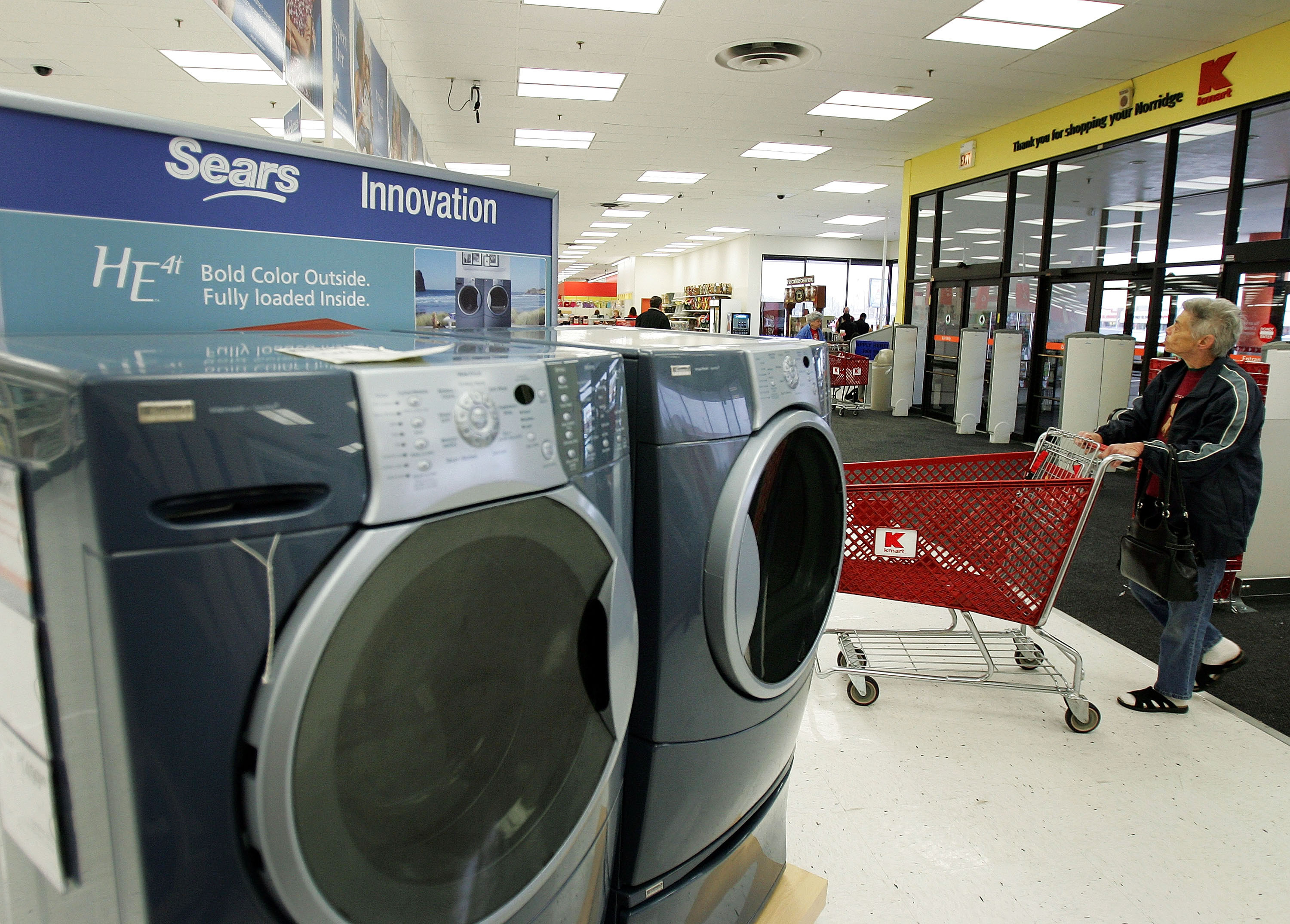- Kmart’s parent company, Sears Holdings, filed for Chapter 11 bankruptcy protection on October 15. The company says it will close 142 Sears and Kmart stores before the end of the year, and its CEO, Eddie Lampert, has stepped down.
- This isn’t the first time that Kmart has filed for Chapter 11 bankruptcy protection. It did so once before in the early 2000s, before it became part of Sears in 2005.
- For decades before then, Kmart was a hugely successful discount store that had more than 2,000 stores throughout the US.
- READ MORE: Inside Sears’ death spiral.
The company says it will close 142 stores before the end of the year, and its CEO, Eddie Lampert, has stepped down. Lampert is staying on as chairman and is reportedly in talks with at least one potential partner about sharing the burden of a $300 million bankruptcy loan for the company.
Sears has been closing stores and selling off assets following years of crippling sales declines. The company operates 687 Sears and Kmart stores, according to its bankruptcy filing. That’s down from nearly 2,000 stores in 2013.
This isn’t the first time Kmart has faced bankruptcy. In 2002, it filed for Chapter 11 bankruptcy protection before merging with Sears in 2005. At the time, it was the largest retail merger ever. The combined company’s sales have plummeted since then, dropping from $53 billion in 2006 to less than $17 billion last year.
Before things started going downhill, Kmart had thousands of stores across the US.
Here's how Kmart ended up where it is now:
The first Kmart discount store was opened in Garden City, Michigan, in 1962 by the S.S. Kresge Company.
Source: New York Times
In its first year, 17 more Kmart stores opened, and sales were upwards of $483 million.

Source: New York Times
S.S. Kresge, the company that started Kmart, changed its name to the Kmart Corporation in 1977.

Source: New York Times
By 1981, there were 2,000 Kmart stores across the country.

Source: New York Times
Kmart spent the 1980s and 1990s buying various retailers, including Waldenbooks, Builders Square, PayLess Drug Stores Northwest, PACE Membership Warehouse, Borders, and Sports Authority.

Source: New York Times
In 1990, Walmart passed Kmart in sales, knocking Kmart down to the third largest retailer.

Source: New York Times
That's when things started going downhill. From 1994 to 1995, Kmart sold off Office Max, Sports Authority, and a number of other retailers it had acquired.

Source: NY Times
In 1995, more than 200 Kmart stores were closed.

Source: New York Times
It began testing new store formats, like Big Kmart, a larger version of traditional Kmart stores. The Big Kmart stores were bigger and brighter than traditional stores, and they sold a bigger variety of products.

Source: New York Times
In late 1999, Kmart launched BlueLight.com, its online store.

Source: New York Times
However, it continued to close stores throughout the 2000s.

Source: New York Times
The company filed for Chapter 11 bankruptcy protection in early 2002.

Source: CNN Money
In 2005, Sears merged with Kmart to create Sears Holdings. At the time, it was the largest retail merger ever.

Source: Business Insider
The combined company's sales have plummeted since then, dropping from $53 billion in 2006 to less than $17 billion last year. Kmart has struggled while competing with Walmart and other discount retailers on price.

Source: Business Insider, Business Insider
Dozens of Kmart stores will be closing by the end of the year in the wake of Sears Holdings' filing for Chapter 11 bankruptcy protection earlier this month.

Source: Business Insider
Meanwhile, many of its stores have fallen into disrepair.

When we visited a New York City Kmart location after the bankruptcy filing, we found the store to be messy, with floors peeling up, dead plants on display, and boxes of merchandise everywhere.

Read more about Sears' bankruptcy:
- We visited a Kmart store the day after Sears filed for bankruptcy, and it was a mess. Here's what it was like shopping there.
- Sears is shuttering 142 stores with liquidation sales starting immediately - here's the complete list of closing stores
- Sears, once the largest retailer in the world, has filed for bankruptcy and is closing 142 stores. Here's how it got there.
- Sears is closing hundreds of stores and keeping the rest open through the holiday season - but shoppers won't get the blowout deals they may be expecting
- Mall owners want to bar Sears from hanging 'going out of business' signs outside closing stores as the industry weathers a crisis

